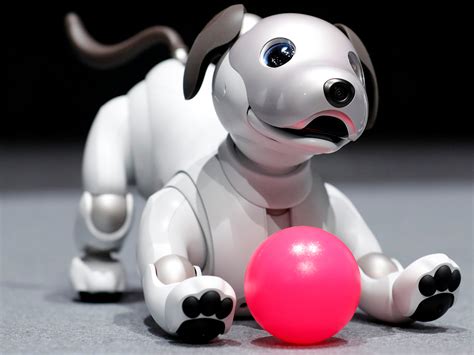Introduction:
The realm of artificial intelligence (AI) is rapidly transforming various industries, and the pet industry is no exception. AI robot pets are emerging as a cutting-edge solution to the challenges and desires of pet owners, and their presence is projected to grow exponentially in the years ahead. This article explores the future of AI robot pets in 2025 and beyond, highlighting key predictions and anticipated advancements.

Predictions for the Future of AI Robot Pets:
1. Hyper-Realistic AI Companions:
By 2025, AI robot pets are predicted to achieve unprecedented levels of realism, mimicking the behavior, appearance, and emotions of real animals. Advanced machine learning algorithms will enable them to respond naturally to their owners, fostering deep emotional bonds.
2. Enhanced Connectivity and Interactivity:
AI robot pets will be seamlessly integrated into the Internet of Things (IoT), allowing for remote monitoring, real-time updates, and interactive experiences. Owners will be able to control their pets’ behaviors, access real-time health data, and engage in virtual play sessions from anywhere.
3. Personalized Pet Experience:
Machine learning and data analytics will personalize the pet experience for each owner. AI robot pets will tailor their interactions, preferences, and behaviors based on data gathered from sensors, user feedback, and online profiles.
4. Integration with Healthcare:
AI robot pets may become integral to healthcare for both pets and owners. Sensors and monitoring devices embedded within the pet can provide valuable data on pet health, early detection of diseases, and proactive care.
5. Expanded Market Potential:
The global market for AI robot pets is estimated to reach $29 billion by 2025. This growth will be driven by increasing pet ownership, technological advancements, and the desire for personalized and interactive pet experiences.
AI Robot Pets vs. Traditional Pets:
Pros of AI Robot Pets:
- Convenience: No feeding, grooming, or walking required.
- Hypoallergenic: Ideal for individuals with allergies.
- Unlimited Playtime: Available for play and companionship 24/7.
- Customization: Personalized to match preferences and needs.
- Data Monitoring: Provides insights into pet health and well-being.
Cons of AI Robot Pets:
- Cost: Initial purchase and maintenance costs can be significant.
- Technical Limitations: Current models may have limited functionality and require frequent updates.
- Artificial Connection: May lack the genuine emotional connection of a living pet.
- Environmental Impact: Production and disposal of electronic components can create waste.
- Ethical Concerns: Need to address issues related to animal welfare and the ethics of companionship.
Tips and Tricks for Choosing the Right AI Robot Pet:
- Consider Your Needs: Determine the purpose of your AI robot pet, whether it’s for companionship, entertainment, or healthcare.
- Research and Compare: Explore different models, read reviews, and compare features to find the best option for you.
- Check for Customization: Look for models that offer personalized pet profiles, behavioral settings, and interactive play options.
- Consider Connectivity: Ensure the AI robot pet you choose is compatible with your smart devices and home automation system.
- Read the Reviews: Seek feedback from other pet owners and industry experts to gain insights into the performance and reliability of different models.
Expanding Market Insights:
- Elderly Companion: AI robot pets can provide companionship, entertainment, and a sense of purpose for elderly individuals, reducing loneliness and improving well-being.
- Pet Therapy: Robot pets can be used in therapeutic settings to alleviate stress, promote relaxation, and reduce anxiety in individuals with disabilities or mental health conditions.
- Educational Tool: AI robot pets can teach children about animal behavior, empathy, and responsible pet ownership.
- Military and First Responders: Robot pets can provide comfort and distraction to military personnel and first responders deployed in high-stress environments.
- Wildlife Conservation: AI robot pets can simulate different animal species, facilitating research and conservation efforts without disturbing wildlife habitats.
Case Detail:
PetPal, a leading manufacturer of AI robot pets, has recently launched a new model called “CompanionX.” CompanionX incorporates advanced sensors, machine learning algorithms, and a cloud-based platform to provide a highly personalized and interactive pet experience. Users can create custom profiles, receive daily health updates, and engage in interactive play sessions from their smartphone.
Conclusion:
The future of AI robot pets holds immense promise, revolutionizing the way we interact with and care for our beloved companions. From hyper-realistic AI companions to enhanced connectivity and integrated healthcare, AI robot pets are poised to become an integral part of our lives. As technology continues to advance, we can expect to see even more innovative and groundbreaking developments in this exciting field.





















